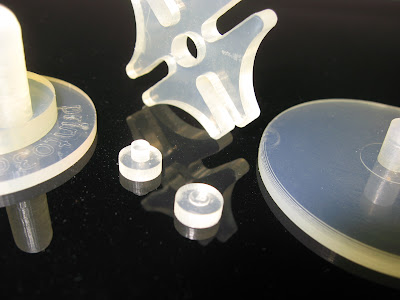
The results were spectacular!
I built two copies of a puzzle that has a lot of spherical surfaces. The puzzle at left has been dipped in Weld-On 2007 for ten seconds. It looks about the same in the picture, but the sidewalls are noticeably smoother. The pieces for the solvent-dipped puzzle slide together more pleasantly.

Solvent-dipping made the sidewalls much more transparent, too. The printed document shows through the part at left, with the sidewalls acting like a primitive lens. In contrast, the sidewalls of the un-dipped part (right) are merely translucent.

A solvent-dip also improved parts' mechanical properties. Last week I built a barrel puzzle whose parts fit too tightly to operate the puzzle without damaging it. After I dipped the parts, the puzzle turns smoothly enough to be practical for actual use. As a bonus, the solvent sealed and strengthened the curved internal contours. And it's noticeably more transparent; the view below is looking entirely through side walls!

I imagine there's room for further experimentation and refinement. Regardless, solvent finishing SD 300 parts with Weld-On 2007 is clearly a valuable post-processing technique. Tell your friends!

























